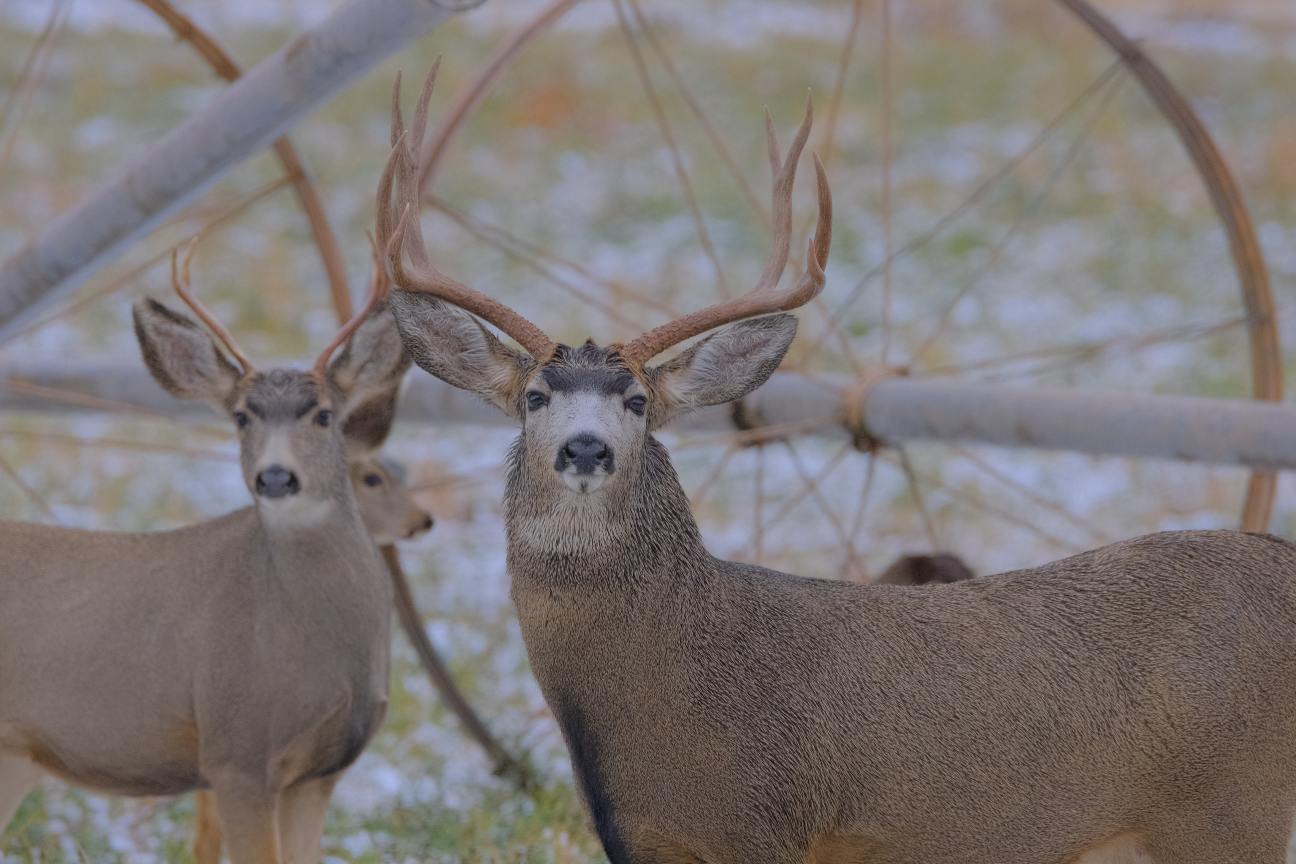A 2022 New Mexico Supreme Court decision opening streams on private land to the public has fishermen cheering, but not so much the fish. After all, the decision converted thousands of miles of small streams and fragile spawning beds into unmanaged recreational footpaths, impacting not just the fish, but every creature that makes its home in and along the water.
Media coverage on this and similar cases usually casts the issue as a battle between sportsmen and wealthy landowners. A New York Times headline asked, “Does This Fisherman Have the Right to Be in a Billionaire’s Backyard?” This popular angle predictably reels in a healthy catch of public indignation, but it misses the deeper story about why fish and wildlife find themselves dissolving into history; why we are losing the last, best places and habitats; and what we, as a society, can possibly do to change this before it is too late.
Rarely do such stories mention that the majority of wildlife left in the United States find lifesaving refuge on private land. In fact, up to 80% of wildlife, including threatened and endangered species, depend on private lands and private investment for survival. It is landowners, including working family ranchers and farmers, who provide the majority of critical winter range for big game throughout the West, and it is landowners who are conserving and recovering black-footed ferrets, Chiricahua leopard frogs, Amargosa toads, trumpeter swans, arctic grayling, San Juan cutthroat trout and many other species.
The fish, of course, were not interviewed in the New York Times article, or in any of the other media coverage on the topic. Had they been given a voice, a new angle might have surfaced. The fish, for example, might have seen land-owner investments into their habitat and protection not as “privatization” but as the gift of shelter and survival.
Up to 80% of wildlife, including threatened and endangered species, depend on private lands and private investment for survival.
Lesli Allison
Media coverage also routinely neglects yet another important player in this mix: the outdoor recreation industry. According to the US Bureau of Economic Analysis, the outdoor recreation industry, which includes hunting and fishing, contributes $454 billion annually to the US economy, comprising nearly 2% of the total gross domestic product (GDP). Yet while business is booming, and even state and local governments are looking to cash in by promoting more and more outdoor recreation and public access, management and conservation aren’t keeping up.
Crowds surging to the outdoors during COVID-19 highlighted the growing impacts of public recreation on land and wildlife. The New York Times headlined a 2020 story “Pandemic Crowds Bring ‘Rivergeddon’ to Montana’s Rivers.” Yet, overcrowding and resource degradation were happening in popular public recreation areas long before COVID-19 and will only continue to increase. This is a big reason why recreationalists are now looking over the fence to the greener pastures and uncrowded waters on private lands.
Envision this for a moment through the eyes of fish and wildlife. We’re not just talking about hunters and fishermen, we’re talking about mountain bikers and motorized recreation, hikers and campers, skiers and snowshoers, rafters and climbers, horn hunters and bird watchers and recreational shooters. People are spilling out all over the landscape and demanding still more access to every last untapped corner. Trail systems are expanding everywhere, and outdoor tour advertisements feature pictures of all-terrain vehicles (ATVs) plowing up the middle of streams. Where are the fish and wildlife to go? Personally, hunting, fishing and other forms of outdoor recreation are deeply important to me and my family. These activities are a fundamental part of my own health and relationship with life, nature and the outdoors. I also treasure our public lands. At the same time, I recognize that there are an awful lot of us out there using, consuming and recreating—and not giving a whole lot back.
Conversely, private lands and landowners play a vital role in conserving and restoring not just fish and game, but also non-game species. In fact, comprising nearly three-quarters of land in the continental US, private lands are a lifeline for wildlife. Private landowners collectively invest billions of dollars out of pocket in purchasing, conserving, restoring and managing land and wildlife habitat. We would not have a fraction of the fish, wildlife and open lands we have today were it not for the investments and care of landowners.
Yet owning and managing land is expensive. Just ask the federal government. Federal land management agencies have an eye-popping maintenance backlog of more than $30 billion. On the private side of the fence, agriculture is the primary economic driver keeping land open and available to wildlife. Without the ability to generate income from ranching and farming, most of the best remaining wildlife habitats would have already been subdivided, paved over and developed. Guest ranching and outfitting are also important to the survival of many family farms and ranches. These carefully managed operations provide opportunities to the public to recreate without overwhelming wildlife and other resources. The income generated helps support rural livelihoods while keeping the land and wildlife habitat healthy and intact.
It’s time to change the public narrative. There needs to be room in this story for landowners who are deeply vested stakeholders and essential partners in conservation. We need to ensure that recreation contributes positively to sustaining the working lands that both people and wildlife depend on for survival. Above all, we need to make room in this story for fish and wildlife as members of this living community to which we all belong.





